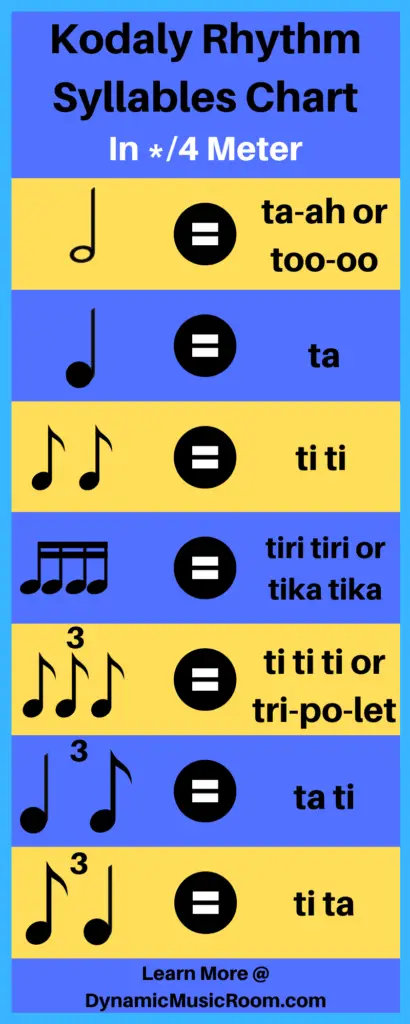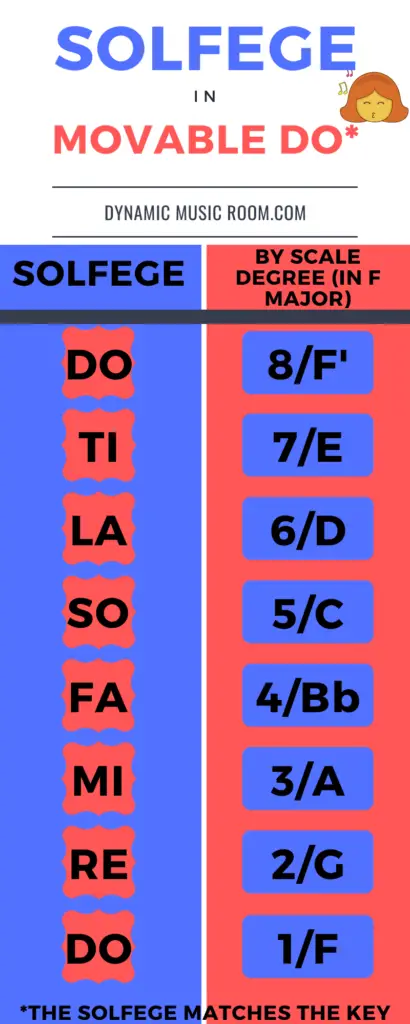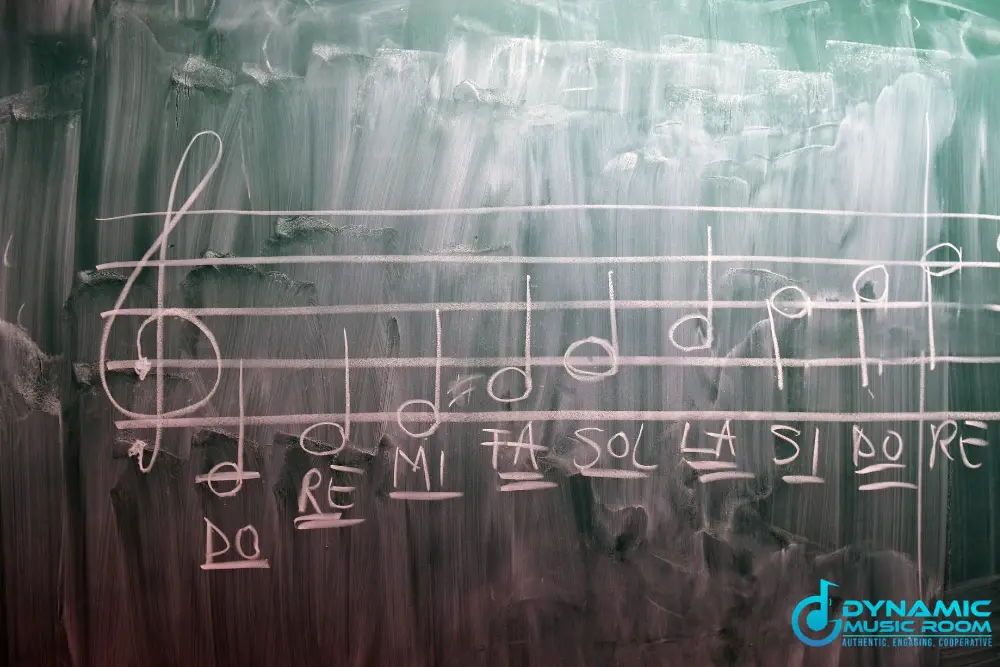Are you interested in learning more about the Kodaly method?
Have you heard about how essential syllables are in this teaching method, but you’re unsure what to look for?
I’ve been a massive fan of the Kodaly for the past eight years in my teaching career.
I even went so far as to take three Kodaly levels and get certified.
But back when I was starting, I didn’t believe in the power of solfege and syllables.
Most music methods use them, but what are the Kodaly solfege syllables?
Kodaly solfege is split into two groups: rhythm and pitch (otherwise known as solfege). The rhythm syllables vary, but they typically use Ta and TiTi. The pitch or solfege syllables use movable Do, which means they change depending on the starting pitch of the key.
Check out the rest of the article for more information.
Table of Contents
Kodaly Syllables For Rhythm
There’s a fair amount of variation between the different rhythm syllable systems used with the Kodaly method.
I talk about this in detail in my article on Kodaly counting systems. Click the link to check it out.
Briefly, the traditional Kodaly method is a replacement syllable system.
This means you replace specific rhythm values with particular syllables.
Replacing like this makes it easier for kids to perform the rhythm, and it attaches a linguistic representation of the spatial value.
With traditional Kodaly syllables, we replace the quarter note with the syllable Ta and the eighth notes with the syllable TiTi.
It evolves from there, but this is the defining syllable of the traditional Kodaly system.
You don’t need to use this system to be a Kodaly teacher or follow the Kodaly approach.
It’s vital that you choose a system and follow through with it.
This graphic spells out a little bit more of the traditional Kodaly rhythm syllables.

Kodaly Solfege Syllables
Despite what many people think, Kodaly did not invent the solfege syllables or the hand signs.
Guido first invented the solfege syllables in the 900s.
They are in use today by every elementary music method and by many choirs and some bands and orchestras.
Some call it Kodaly do re mi.
The syllables go: Do Re Mi Fa Sol La Ti.
Movable Do
With Kodaly inspired teaching, teachers usually follow what’s called movable Do.
In movable Do, the starting pitch in any key is always Do.
For example, if you’re playing or singing in the key of F major, the note F is Do.
The next note up, which is G, is now Re and so on.
For minor keys, there is some debate about which syllables to use.
One approach keeps Do as the starting pitch but adds more chromatic solfege.
The other approach, which seems more common, is to start on La.
Using La allows you to reinforce the relationship between the major and the relative minor.
Yes, this is high level and may not show up in elementary music, but it transfers much easier for the kids to go on to make more music in their lives.

Fixed Do
The opposite of movable Do, which is what most teachers use, is fixed Do.
Dalcroze is famous for using fixed Do.
Other countries in the world also use fixed Do as their primary method of solfege.
With a fixed Do system, each letter name note is assigned a syllable.
This syllable does not change no matter what key you’re singing in.
C is always Do.
D is always Re.
And so on and so forth.
Use this graphic to help you see the difference a little bit.

Commonly Asked Questions
This section will go over relevant questions people often ask when talking about Kodaly syllables.
Don’t forget to check out the rest of Dynamic Music Room’s solfege resources by searching for “solfege” in the search bar.
We have articles, songs, and exercises all for solfege for you to check out.
What Solfege Syllable Does The Kodaly Method Start With?
The Kodaly method either starts by teaching Sol-Mi or by starting with Do-Re-Mi. The difference is largely up to teacher preference, but in general, those who start teaching solfege in first grade will use sol-mi, and those who start in second grade or higher will use Do-Re-Mi.
What Is The Point Of Solfege?
Solfege has been used for many centuries because it helps others understand the pitch relationship of notes in a melody and scale. Whether it’s moveable or fixed Do, solfege helps attach unique syllables for each note and develop the inner hearing of the pitches.
How Do You Introduce Solfege?
Introduce solfege by first having students sing songs with the pitches in the melody. Then, attach the pitches with specific solfege syllables in a sequential manner. Finally, attach the solfege syllables to how they function on the staff.
Does Orff Use Kodaly Solfege?
As a rule, Orff doesn’t specify which system they use, whether it be Kodaly syllables or fixed Do. However, Orff advocates for the use of a syllable system, but it’s up to the teacher to choose. Most use the Kodaly Do Re Mi system.
Is Do Always C?
Do may always be C, or it may change with the starting pitch of the key you’re in. It depends on if you’re using fixed Do or moveable Do. Most music teachers in the modern-day use moveable Do.
Final thoughts
Kodaly solfege and Kodaly syllables are an essential part of the music teaching method.
Syllables are a tool teachers use to help students improve their understanding of how the concepts work, help students learn faster, and attach a linguistic representation of the sound concepts.
This is simply fancy speak for helping students understand with a greater depth of knowledge.
If you haven’t been using Kodaly do re mi, I hope this inspires you to start trying.
If you were confused before, I hope this gives you a good place to start on your syllable journey.


